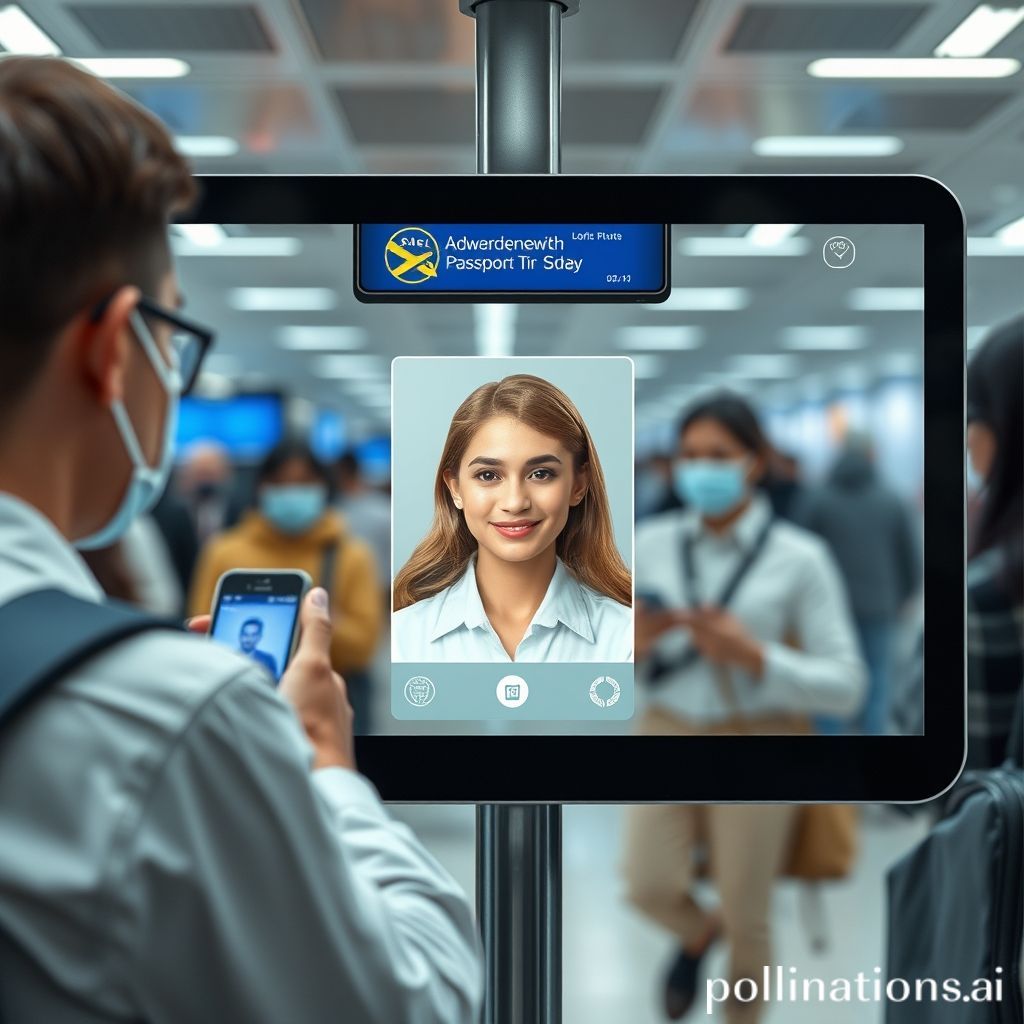Advanced passenger processing system now captures photos before passport checks

Smile! The Future of Border Security is Here (and It's Taking Your Picture)
Hey there, fellow travelers! Ever feel like airport security is a bit of a black box? You hand over your passport, get it scanned, and (hopefully) sail through. But what really happens in those few seconds? Well, the world of border control is getting a high-tech upgrade, and it's time we shed some light on it.
A significant shift is underway: advanced passenger processing systems are now capturing your photo before you even present your passport. That's right, before the official check, your face is being analyzed. Intrigued? Let's dive into what this means for you, for security, and for the future of travel.
Why the Pre-Passport Photo? Unpacking the Tech
The core reason behind this change is efficiency and accuracy. Think of it as a digital pre-screening. These advanced systems utilize sophisticated facial recognition technology to analyze your image and cross-reference it with various databases watchlists, immigration records, and even lost or stolen passport databases.
Speed and Efficiency: By capturing the photo beforehand, the system can begin the verification process while you're still approaching the immigration officer. This shaves valuable seconds (or even minutes) off processing times, reducing queues and making the overall experience smoother.
Enhanced Security: The pre-check allows for early detection of potential security threats. If a match is flagged, officers can be alerted beforeyou reach the counter, allowing for a more discreet and controlled intervention.
Fraud Detection: The system can identify potentially fraudulent documents more effectively. By comparing the live image with the photo embedded in your passport andother records, discrepancies can be flagged for further investigation.
How It Works: A Step-by-Step Breakdown
Imagine you're walking towards the immigration checkpoint. Unbeknownst to you, a discreet camera (often integrated into signage or the architecture) captures your image.
1. Image Capture: A high-resolution camera takes a photo of your face.
2. Facial Recognition Analysis: The system analyzes key facial features the distance between your eyes, the shape of your nose, etc. creating a unique biometric "fingerprint."
3. Database Comparison: This fingerprint is compared against a vast database of images.
4. Risk Assessment: The system assesses the potential risk associated with your profile based on the database matches (or lack thereof).
5. Alerting Authorities: If a potential threat is identified, officers are discreetly alerted.
6. Passport Verification: You present your passport, and the officer verifies the information in the traditional manner, potentially with additional information provided by the pre-check.
The Benefits and Drawbacks: A Balanced Perspective
Like any new technology, this system has both advantages and disadvantages.
| Feature | Benefits | Drawbacks |
| | | |
| Speed | Reduced wait times, faster processing. | Potential for errors leading to unnecessary delays. |
| Security | Early detection of threats, enhanced fraud detection. | Risk of false positives, potential for profiling based on biased data. |
| Data Privacy | Anonymization and encryption, Compliance with privacy regulations in many countries, such as GDPR in Europe, and CCPA in California, are standard | Concerns about data storage, potential for misuse of data, questions about data retention policies. |
| Accuracy | Improved identification of individuals, reduced reliance on manual checks. | Dependence on image quality, potential for errors due to changes in appearance (e.g., beard, glasses). |
| System Integrity | The new system should be updated and managed by a multi-party stakeholder board with civilian oversight | Security vulnerabilities and the risk of hacking. |
Where Is This Happening? A Global Rollout
This technology is being implemented in airports and border crossings worldwide. Australia, Canada, the United Kingdom, and the United States are among the countries leading the way. Expect to see it become increasingly common in the coming years. The exact details of the implementation, including the databases used and the level of automation, vary from country to country.
The Future of Travel: A Glimpse into Tomorrow
This pre-passport photo capture is just one piece of the puzzle. The future of border security is likely to involve even more advanced technologies, including biometrics (iris scans, gait analysis), AI-powered risk assessment, and seamless digital travel documents.
Final Thoughts: Navigating the New Landscape
This technological shift is upon us, and it's important to be informed. While enhanced security and efficiency are welcome, we must also be vigilant about protecting our privacy and ensuring fairness. By understanding how these systems work, we can engage in informed conversations about their implementation and hold authorities accountable for responsible use.
As a frequent traveler, I see both the promise and the potential pitfalls of this new technology. The key is transparency, robust oversight, and a commitment to ethical data handling. Only then can we truly benefit from the advancements without sacrificing our fundamental rights. The future of travel is undoubtedly changing, and it's up to us to shape it in a way that is both secure and respectful of individual liberties.
Sources:
Official government websites of countries implementing the technology (e.g., Australian Department of Home Affairs, U.S. Customs and Border Protection).
Reports from reputable technology and security news outlets.
Academic research papers on facial recognition and biometric technology.
Publications from privacy advocacy groups and civil liberties organizations.

0 Comments:
Post a Comment